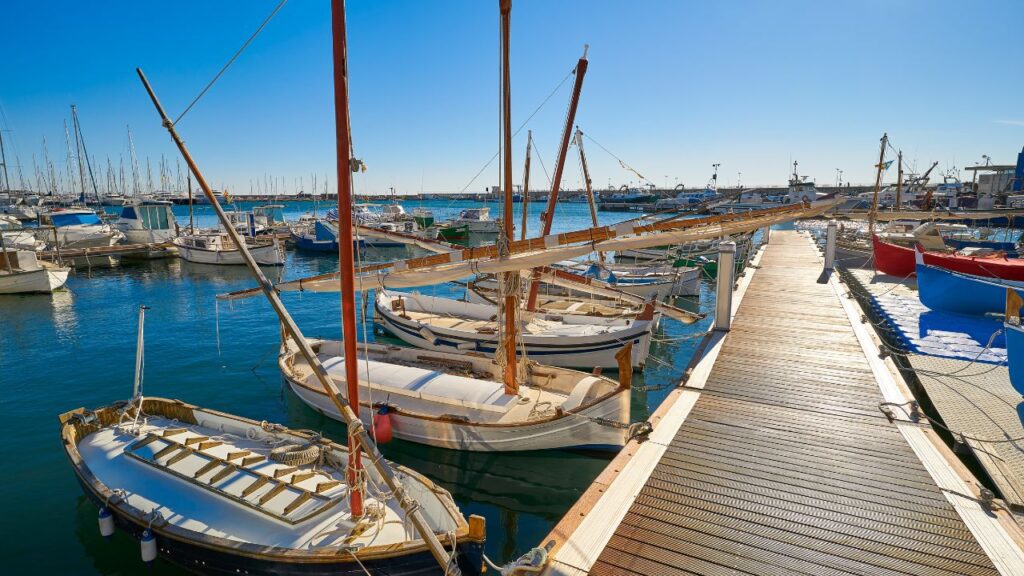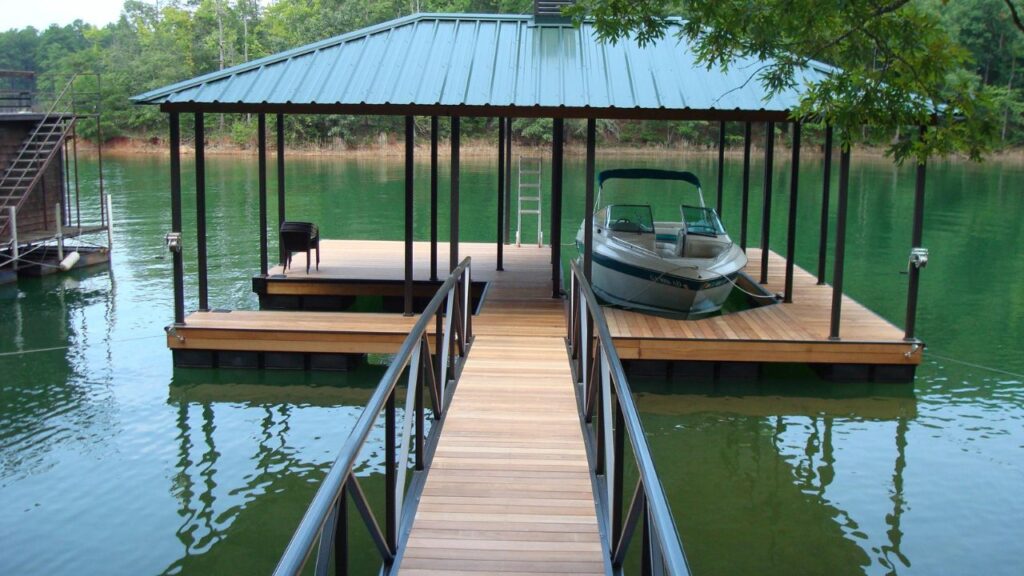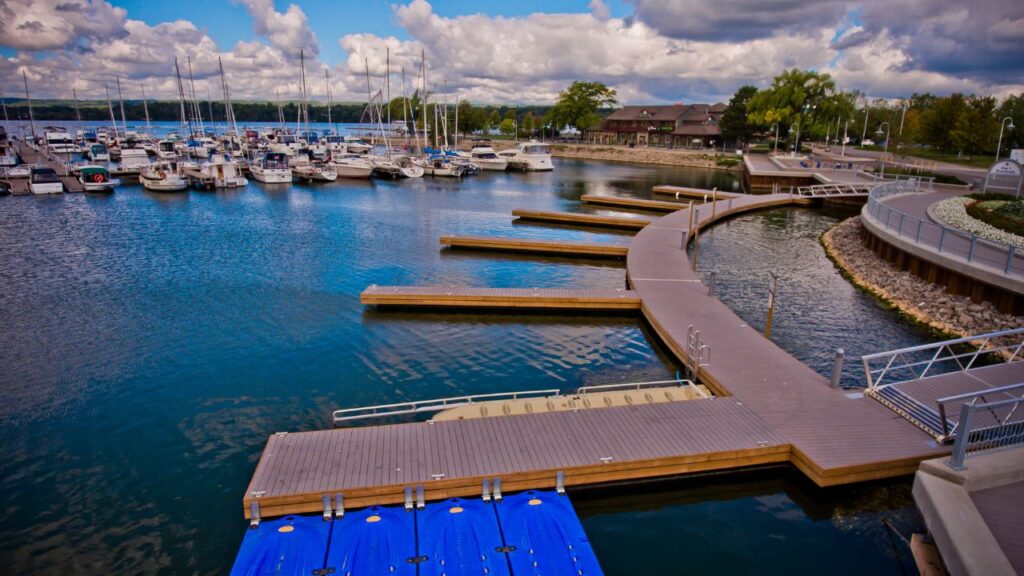Get A Dock Cost Estimator
The cost of your dock largely depends on the number of square feet being installed, but the average cost per square foot ranges from $20 to $50, averaging $40 per sq.ft.

Determining the cost of a floating dock involves various factors, with prices ranging from $15 to $35 per square foot. The ultimate expense hinges on considerations such as size, materials, and design preferences. Typically, floating docks are more compact compared to their stationary counterparts. The size of the watercraft and intended use influence the dimensions of the dock, directly impacting the overall cost for both commercial and residential applications. Material choices, such as wood or composite decking, also contribute to the pricing spectrum.

Additionally, customized features or advanced designs may incur higher expenses. At Estimate Florida Consulting, we specialize in providing accurate estimates for your dock projects, ensuring that you can make an informed decision based on your specific needs and budget constraints.
Traditional wooden docks are a timeless choice appreciated for their charming aesthetic appeal, seamlessly blending with natural surroundings. These docks exude a classic, warm ambiance that many find attractive. However, it’s essential to note that wooden docks come with specific maintenance requirements. Regular sealing, staining, and inspection are necessary to preserve the wood and ensure structural integrity. While the initial cost may be lower compared to some alternatives, it’s crucial to factor in the long-term maintenance expenses when evaluating the overall investment in a traditional wooden dock.
Aluminum docks have gained popularity for their lightweight construction, impressive durability, and resistance to rust and corrosion. These docks are particularly suitable for both freshwater and saltwater environments, making them a versatile option. Despite the potentially higher initial cost, aluminum docks often prove to be cost-effective over time due to their minimal maintenance requirements. The durability of aluminum also ensures a longer lifespan, contributing to their overall value for waterfront property owners.
Plastic docks are increasingly becoming a favored choice, primarily due to their low maintenance and eco-friendly characteristics. These docks are resistant to rot, insects, and various environmental conditions, making them a durable and sustainable option. When considering plastic docks, it’s essential for prospective buyers to understand the cost implications associated with this material. While they may have a higher upfront cost, the reduced maintenance needs and extended lifespan can result in substantial long-term savings, making them an economically viable and environmentally conscious choice.
Concrete docks are known for their unmatched stability and durability, providing a robust platform for various waterfront activities. While these docks may incur higher installation expenses compared to some alternatives, their long lifespan and minimal maintenance requirements can offset these initial costs over time. Concrete docks are a resilient option, capable of withstanding harsh weather conditions and heavy use. Prospective buyers should conduct a thorough analysis of the long-term costs to determine the overall affordability of concrete docks, considering their durability and longevity as key factors in the investment decision.

The choice of dock material is a crucial factor that significantly influences the overall cost of a floating dock. Each material, whether it be traditional wood, aluminum, plastic, or concrete, comes with its own set of advantages and drawbacks. The selection of material not only impacts the initial investment but also influences future maintenance costs. Prospective buyers should carefully weigh the aesthetic appeal, durability, and maintenance requirements of each material to make an informed decision that aligns with their budget and preferences.
The size and configuration of the dock are pivotal considerations in determining the overall cost of the project. Larger docks or those with intricate designs and multiple features may incur higher expenses. The complexity of the design and the amount of material required directly correlate with the cost of construction. Property owners should carefully assess their specific needs and usage requirements to strike a balance between the desired dock size, configuration, and the associated budget constraints.
Incorporating additional features into the dock design can significantly enhance its functionality and aesthetic appeal. Features such as boat slips, benches, lighting, or other custom elements contribute to an improved user experience but also contribute to increased costs. Buyers should carefully prioritize and plan for these additional features based on their specific needs and preferences, considering the impact on the overall budget. Understanding the trade-off between added functionality and increased expenses is essential to make informed decisions during the planning and design phase.
Get A Dock Cost Estimator
The cost of your dock largely depends on the number of square feet being installed, but the average cost per square foot ranges from $20 to $50, averaging $40 per sq.ft.

The method of installation is a critical factor that affects the overall cost of a floating dock. Professional installation ensures structural integrity and compliance with safety standards but comes with its own price tag. Property owners opting for professional installation should budget for labor costs, equipment rental, and any additional fees associated with hiring skilled professionals. On the other hand, DIY (Do-It-Yourself) options may save money, but they require careful consideration of the individual’s skill level, understanding of safety protocols, and the availability of necessary tools and equipment. Balancing the cost savings of a DIY approach with the assurance of professional installation is a key decision in managing overall expenses.
When undertaking a comparative analysis of floating docks, it is essential to delve into the cost variations across different materials. Each material, be it traditional wood, aluminum, plastic, or concrete, comes with its unique cost structure. Potential buyers should carefully consider not only the upfront costs but also the long-term financial implications associated with maintenance and repairs. While some materials may have a higher initial investment, they could offer substantial savings over time due to lower maintenance requirements and increased durability. This detailed cost comparison allows buyers to make an informed decision, aligning their budget with the desired features and the anticipated lifespan of the dock.
Understanding the pros and cons of each type of floating dock is crucial for making a well-informed decision. Delving into factors such as longevity, maintenance needs, and aesthetic appeal provides a comprehensive view of the trade-offs associated with each material. For instance, traditional wooden docks may boast timeless charm but require regular maintenance, while aluminum docks offer durability with minimal upkeep. Plastic docks, on the other hand, provide eco-friendly options but may have a higher upfront cost. Concrete docks excel in stability but may come with higher installation expenses. By weighing these pros and cons against specific preferences and priorities, buyers can choose a dock material that aligns with their long-term goals and budget constraints. This comparative analysis serves as a valuable tool in the decision-making process, ensuring that buyers are well-informed about the trade-offs associated with each type of floating dock.
Exploring the realm of customization for floating docks extends beyond the base structure, involving the incorporation of accessories and add-ons. Accessories such as boat slips, benches, storage units, or lighting fixtures can significantly enhance the dock’s functionality and aesthetics. While these additions contribute to a more personalized and versatile dock, they also come with an associated cost. Prospective buyers should carefully evaluate the necessity and practicality of each accessory, considering how it aligns with their specific needs and intended use of the dock. This thoughtful consideration ensures that the customization choices not only enhance the overall experience but also provide value for the investment.
Understanding how customization options impact the overall cost is crucial for buyers seeking to align their choices with budgetary constraints. Each added feature contributes to the total cost of the project, and buyers should carefully assess the financial implications of their customization decisions. While certain accessories may be deemed essential for specific use cases, others might be considered optional. Conducting a thorough analysis of the impact on cost allows buyers to strike a balance between enhancing the dock’s functionality and managing expenses.

This process ensures that the final customized dock meets both functional and budgetary requirements, providing a tailored solution that aligns with the buyer’s priorities and financial considerations.
The maintenance of a floating dock involves a series of regular practices that vary depending on the chosen material. Understanding and budgeting for these routine upkeep tasks is essential for ensuring the longevity and optimal performance of the dock. For traditional wooden docks, this may include regular sealing, staining, and inspections to prevent rot and deterioration. Aluminum docks, known for their corrosion resistance, may require occasional cleaning to maintain their appearance. Plastic docks, prized for their low-maintenance characteristics, may need periodic cleaning to remove debris. Concrete docks, while durable, may benefit from inspections and repairs to address any wear or weathering. By comprehensively understanding the specific maintenance needs of the chosen material, dock owners can plan and budget for regular upkeep, minimizing the risk of damage and maximizing the dock’s lifespan.
While the upfront costs of constructing a floating dock are crucial considerations, it is equally important to assess the long-term maintenance expenses and potential savings associated with different materials. Certain materials may demand higher initial investments but offer significant savings over time due to lower maintenance requirements. Understanding the trade-offs between upfront costs and long-term savings is essential for making a financially informed decision. For instance, a material with minimal maintenance needs may result in lower ongoing expenses, contributing to overall cost-effectiveness. By taking into account both immediate and future maintenance costs, buyers can make a well-rounded assessment of the total cost of ownership for their chosen floating dock, ensuring a sustainable and economically sound investment over the years.
Delving into real-life case studies of dock installations offers invaluable insights for potential buyers. These examples provide a practical understanding of the costs involved in various projects, allowing individuals to align their expectations with real-world scenarios. By examining the experiences of others who have undertaken similar dock installations, potential buyers can gain valuable information about the challenges, considerations, and unexpected costs that may arise. Real-life examples also showcase the diversity in materials, sizes, and customization options, enabling buyers to make more informed decisions based on the lessons learned from actual installations. This empirical approach to understanding dock costs aids in creating realistic expectations and ensures a more informed decision-making process.
Analyzing cost breakdowns for specific dock installation projects provides a more granular understanding of where the money is allocated. A detailed breakdown allows potential buyers to see the distribution of costs across various components, such as materials, labor, permits, and additional features. This transparency is essential for individuals to assess the relative importance of each cost category and identify areas where potential adjustments or optimizations can be made. Whether it’s understanding the proportion of the budget dedicated to the chosen dock material, recognizing the impact of customization options, or evaluating the significance of professional installation costs, a detailed cost breakdown empowers buyers to make informed decisions based on a clear understanding of the financial landscape associated with dock installations.
When contemplating the installation of a floating dock, potential cost savings can be achieved by carefully considering the feasibility and safety of a DIY (Do-It-Yourself) approach versus hiring professionals. While a DIY installation may save on labor costs, it requires a thorough assessment of one’s skills, knowledge, and the availability of suitable tools and equipment. Professional installation ensures structural integrity and compliance with safety standards but comes with an associated price tag. Buyers should weigh the potential cost savings against the assurance of a professionally installed and secure dock. Understanding personal capabilities and the complexity of the project is crucial in making an informed decision that aligns with both budgetary constraints and the desire for a well-constructed and safe floating dock.
Timing can be a strategic factor in achieving cost savings for a floating dock project. Seasonal discounts and special offers from suppliers, contractors, or manufacturers may present opportunities for budget-conscious buyers. For instance, off-peak seasons or periods of lower demand may result in reduced prices for materials or services. Keeping an eye on market trends and leveraging seasonal discounts can be a proactive way to optimize costs without compromising on the quality of materials or workmanship. By aligning the project timeline with favorable market conditions, buyers can capitalize on potential savings and enhance the overall cost-effectiveness of their floating dock installation.
Engaging in negotiations with contractors can be a strategic approach to achieving more favorable terms and ultimately securing the best possible deal for a floating dock project. This may involve discussing the scope of work, pricing structures, or seeking multiple quotes to compare and leverage in negotiations. Contractors may be willing to adjust their pricing or offer additional services based on the specific needs of the project. Effective communication and a willingness to explore mutually beneficial arrangements can contribute to cost savings without compromising the quality of the final installation. Negotiating with contractors empowers buyers to actively manage project costs and ensures that the investment aligns with their budgetary constraints.
Determining the cost of a floating dock involves careful consideration of various factors, with prices ranging based on size, materials, and design preferences. Whether opting for traditional wooden docks, durable aluminum structures, eco-friendly plastic options, or stable concrete platforms, buyers must weigh the upfront costs against long-term maintenance expenses. The size, configuration, and additional features also play a significant role in the overall investment. Conducting a comparative analysis of material types, understanding customization options, and exploring real-life case studies provide valuable insights. To optimize costs, individuals can consider DIY options, leverage seasonal discounts, and engage in negotiations with contractors. Making an informed decision ensures a well-balanced, cost-effective investment tailored to specific needs and budget constraints.
The cost of a floating dock varies, but on average, it can range from $15 to $35 per square foot. The final expense depends on factors like size, materials, and design preferences. To get an accurate estimate for your project, it’s recommended to consult with professionals who specialize in dock construction.
The primary factors influencing the cost of a floating dock include the chosen material (wood, aluminum, plastic, or concrete), the size and configuration of the dock, additional features like boat slips or lighting, and the method of installation (DIY or professional). Each of these elements contributes to the overall expense of the project.
The choice of material significantly affects the cost. Traditional wooden docks may have lower initial costs but require regular maintenance. Aluminum docks, though potentially more expensive upfront, often prove cost-effective due to minimal maintenance needs. Plastic and concrete docks also have distinct cost implications, and understanding these differences is crucial for making an informed decision based on budget and long-term considerations.
Maintenance costs vary depending on the chosen material. Traditional wooden docks may require sealing and staining, while aluminum docks may need occasional cleaning. Plastic docks are known for low maintenance, and concrete docks, though durable, may need periodic inspections. Understanding these maintenance needs is essential for budgeting and ensuring the longevity of the dock.
Yes, there are several ways to optimize costs. Considerations include the choice between DIY and professional installation, taking advantage of seasonal discounts and offers, and negotiating with contractors. Understanding these cost-saving strategies allows buyers to make decisions that align with their budget without compromising on the quality of the floating dock installation.
Here I am going to share some steps to get your floating dock estimate report.
You can send us your plan on info@estimatorflorida.com
Before starting your project, we send you a quote for your service. That quote will have detailed information about your project. Here you will get information about the size, difficulty, complexity and bid date when determining pricing.
Our team will takeoff and estimate your project. When we deliver you’ll receive a PDF and an Excel file of your estimate. We can also offer construction lead generation services for the jobs you’d like to pursue further.



561-530-2845
info@estimatorflorida.com
Address
5245 Wiles Rd Apt 3-102 St. Pete Beach, FL 33073 United States
561-530-2845
info@estimatorflorida.com
Address
5245 Wiles Rd Apt 3-102 St. Pete Beach, FL 33073 United States
All copyright © Reserved | Designed By V Marketing Media | Disclaimer